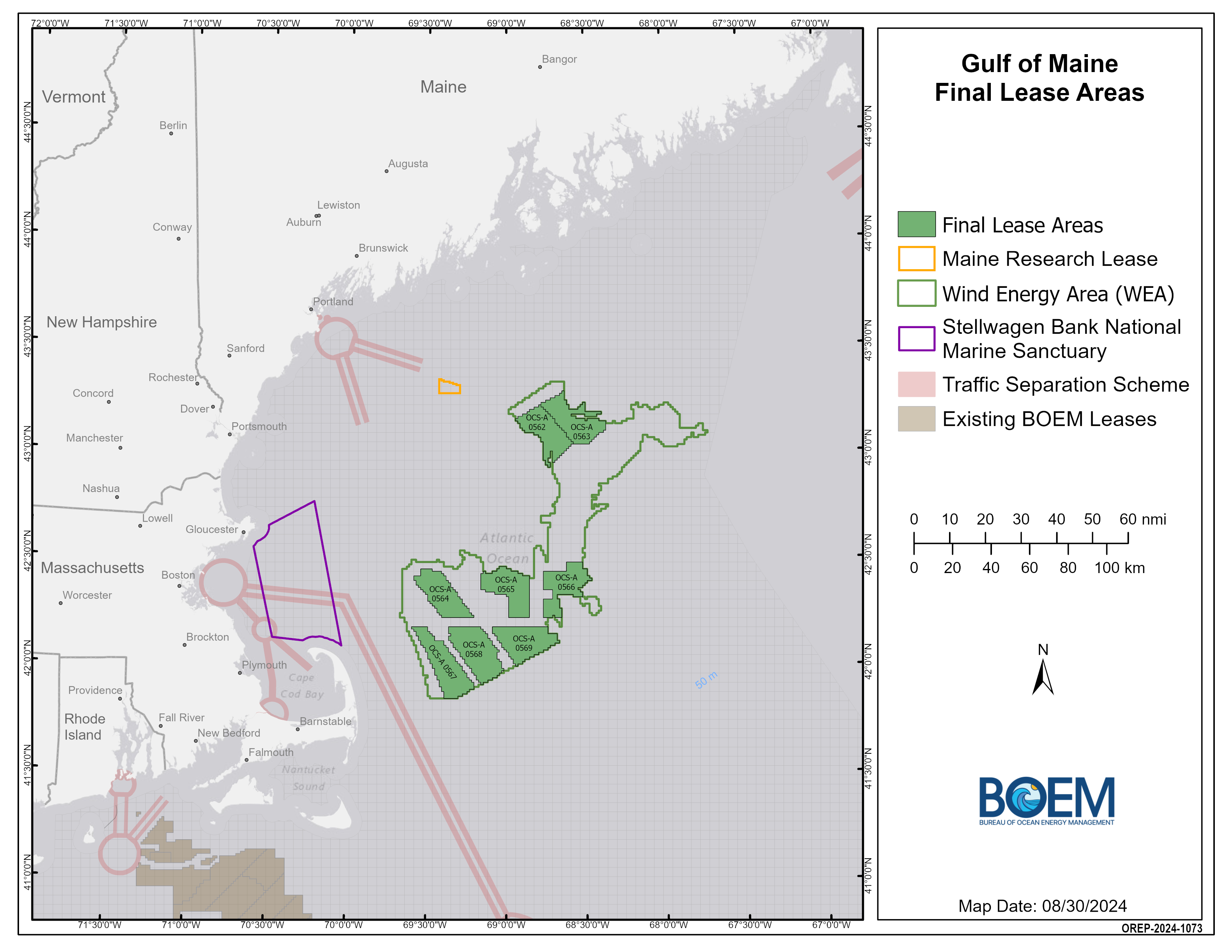U.S. ocean energy managers will soon auction the right to lease about 850,000 acres offshore Maine, New Hampshire, and Massachusetts, according to a recent federal announcement.
On September 16, 2024, the Department of the Interior announced an offshore wind energy lease sale to be held on October 29, 2024. Through an auction process, the Bureau of Ocean Energy Management will sell leasehold interests in eight designated areas in the Gulf of Maine.
According to BOEM's Final Sale Notice for offshore wind leasing on the Outer Continental Shelf (OCS) in the U.S. Gulf of Maine, the government will auction rights to eight separate lease areas within the Gulf of Maine. Each lease area varies in total acreage as well as "developable acres", with the average size being just over 100,000 acres per area.
If fully developed, BOEM says these "these areas have a potential capacity of approximately 13 gigawatts of clean offshore wind energy, which could power more than 4.5 million homes."
BOEM notes that these lease areas exclude about 120,000 acres that BOEM had initially proposed for leasing; these areas were removed following public comment, engagement meetings, and concern over impacts to fishing grounds, navigation, and habitats. The Final Sale Notice also follows BOEM's recent issuance of its final Environmental Assessment of leasing in the Gulf of Maine Wind Energy Area (WEA).
Separate from this commercial leasing process, earlier this year BOEM entered into the nation’s first floating offshore wind energy research lease, covering about 15,000 acres elsewhere in the Gulf of Maine.


